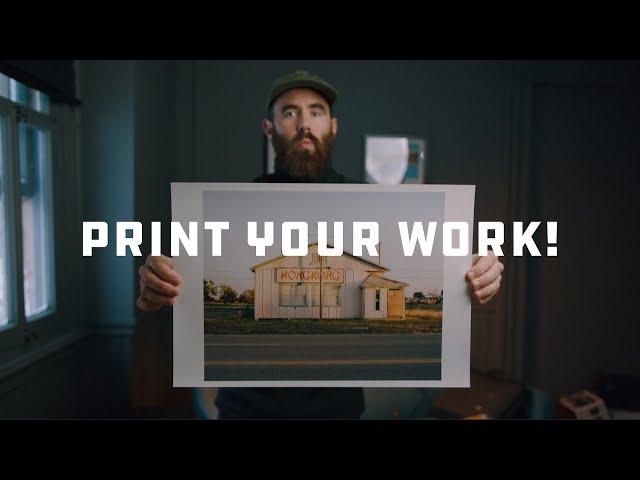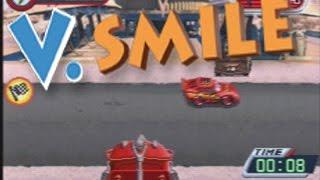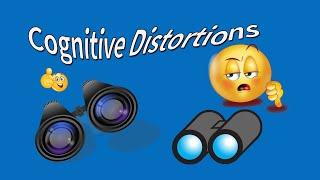
PRINTING WORKFLOW - How I prepare my film scans for print
Комментарии:

Great points on your printing workflow. With regards to the image size dialogue box in PS - you need to turn off “resample” as it’s going to be throwing away or adding pixels of its bigger. Its best to let the PPI go where it wants to go, within your parameters of fine detail/print size/viewing distance parameters. Turning interpolation option OFF means you won’t need to worry about PS adding or throwing away pixels. Your original image resolution stays the same and all you have to think about is the image size you want to print at and let the PPI go where it wants to go.
Ответить
Amazing, thanks.
Ответить
Thanks!!! Great and very helpful videos!
Ответить
very informative.. thx alot kyle
Ответить
Thank you very much.
This is really helpful for me!

So helpful and clear! Thank you
Ответить
Super useful vid. man. Thank you.
Ответить
The high pass filter idea was so good.
Ответить
I printed all my photos thru Photoshop for many many years. When I finally made myself learn Lightroom I was especially slow learning to use the print module. When I finally nailed it I would never go back to printing thru PS. Simplicity of use printing thru LR is just so much simpler and my printed results are as high a quality as I have ever achieved. Never need to set resolution as it's always optimal. That said my workflow generally runs a finished file thru PS for sharpening, save the file (which was opened inside LR), then go back to LR and take the file into LR to print it.
Ответить
AdobeRGB or sRGB if I deliver files to a client who maby Is going to print at some lab or at home. I know some lab doesn't print AdobeRGB and when sharpening for print shall I zoom In 100% on a portrait or look at the whole image. If it's a full body portrait.. and It looks way oversharpened att 100% but looks nice at about 25-30% ? Will the print look like that or oversharp like the 100% zoom?
Ответить
If you only get an image size of 3700 x 2700 px from a medium format picture you must use a very low resolution when scanning (like 1280 ppi). Even a simple flatbed scanner can easily do 2600 ppi (I mean real resolution, not those phantastic numbers of the manufacturers), giving you enough pixels to print large without rescaling.
Ответить
Very clear video - thank you! A question though about margins: you are not adjusting anything here and I have had issues in the past with PS not centering the picture correctly when I print and having to add an adjustment to reflect that. Any tip / advice to make sure pictures are centered?
Ответить
Love this Kyle. I've watched it a few times, but you don't mention viewing distance. Would you ever go lower in resolution if taking in viewing distance as a factor. I guess we tend to stand further away when viewing a large print.
Ответить
Found this useful, thanks.
Ответить
Brrrooo, amazing content. Just found your channel. I’ve been printing off Lightroom, but editing in photoshop. This answered all my questions and is suuuuch a better way to print. Keep up the hardwork!
Ответить
hey which scanner do you recommend to use to get a great resolution in 120 format? hoping to print big, that why I get a 120 camera for, I have an apcs sony a6500 which have 24million pixel, so I want the 120 film scan to have at least double the resolution. the lab in my country provide noritsu 1800 (3500*3500), Fuji Sp3000 (4600*4600), Nikon coolscan (8900*8900), Hasselblad x5 (6100*6100), epson v850 (6803*6803) this is just one statistic from one store,
should I choose the Nikon? or is it the noritsu or epson is enough? I heard the epson is not sharp or have detailed enough

Which monitor are you currently using ?
Ответить
A super informative video. Thanks Kyle.
Ответить
I have always used a simple guide for sizing images for either internet viewing or prints.if the image will be view exclusively online, I never bother to take the file resolution above 72 dpi. Anymore and people’s monitors will be unable tell the difference. For printing, I stick to 300 dpi. I simply use PS and set my dimensions to those I want for the real ultimate print size, say 16 by 20, and use a resolution of 300 dpi. Again, my printers are unable of exploiting any more resolution than that. Does this make sense? When I scan with my Nikon 8000ED I routinely scan at the max of 4000 dpi so that I have a massive file to do very detailed clean up prior to saving and then sizing for either printing or internet usage.
Ответить
Your comments on resolution are not quite right. The default resolution setting can be adjusted in PS and should be so it matches the resolution of your printer. I don’t know what the resolution of Canon printers is but a quick Google search says 600 ppi. That means that your printer will resize your image up from 240 or whatever you set to 600. Maybe it does a great job. Maybe not. On Epsons the default is 360 and it can also print at 720. I never leave it to my printer to do the resizing.
Ответить
I struggled for what felt like forever trying to figure this out online until I saw this video. Thank you so much dude this was super helpful
Ответить
I'm printing a lot, no real reason to watch yet another video about printing - BUT the way you explain things is so easy to understand and you put things so nicely, I'd say "watch it for the sake of watching it", even if you already know what's up. Thanks a lot for all the content!
Ответить
Great Video
Ответить
What if you only have a MacBook with no monitor? Do I need to calibrate my MacBook screen?
Ответить
Can you tell me the name of the beat at the intro?
Ответить
Hi - the link to the print store no longer works for me, just a heads up!
Ответить
Sorry if I didn't see it what resolution did you scan those images at?
Ответить
Ps actually does a good job creating the extra information as long as you have a fairly decent size to start with. Great Video. Regards, Barrie
Ответить
Sorry to have correct you on monitor calibration and profiling.....but during the measurement of the display, there’s no comparison against “set standards” (common misconception). The colorimeter (i1Dispaly) or spectrophotometer (i1Pro 1, 2 or 3) is simply recording the display’s response to various RGB input values (DeviceRGB in color management terms). The record of the display’s output of these RGB values can be spectral, L*a*b* or XYZ...it’s simply a measurement. This is then rolled into the making of the display’s ICC profile. Once this is set as your display profile in your system, it’s then used by color management-aware apps like Photoshop and Lightroom to properly correct the display’s output to your RGB “working space” profile such as sRGB, Adobe RGB and others (Lightroom uses “Melissa RGB” as its internal RGB color space for RAW or DNG files). Monitor CALIBRATION is something else....done prior to profiling. Display calibration is typically the setting of a display’s luminance, color temperature, gamma and black point. This can be set manually or automatically under the control of the calibration software, depending on the display. (My apologies for the long answer!).
Ответить
Thank you so much for the video, I am thinking about printing my images and this helps it feel achievable!
Ответить
What's your lab of choice for printing?
Ответить
Hi Kyle, I have a question regarding the initial scanning of your negative for printing. I was wondering what resolution you look to get your negatives scanned in at? I saw that you replied in someone else's thread about getting them scanned in at the lab in Tiff format but would hope that some of my home scanning would be good enough. I have been scanning at home with an Epson v600 which is supposedly rated at its optimal resolution around the 1600-2400 mark. I would love to do some larger prints eventually with some of my 120 negatives but am a bit cautious about how they would come out with my current scanning set up. Presently its a 2400 dpi using VueScan. Would appreciate anyone else's input too please. Thanks.
Ответить
Hey, if getting negatives scanned from a lab they usually ask if i want to scan for JPG or TIFF's, do you think when i'm intentionally scanning for prints I should go with the TIFF option?
Ответить
Kyle, what professional lab do you use for 35mm negatives? I'm interested in receiving full 48bit scanning capable of printing at 24 inches x 36 inches prints from a 3:2 Aspect Ration. So, my scans would most likely be custom and saved as a TIFF. Thanks, David
Ответить
It makes perfect sense... Thanks!!!
Ответить
Great vid Kyle, thank you! Do you ever use on one resize for up rezzing images?
Ответить
Do you have a video that discusses RGB and CMYK profiles? What do you work in? Do you stay in RGB and just use the profiles for your paper and printer/ink? Thanks!
Ответить
This is an amazing video. I have learned how to correct so many issues I have been struggling with. Thank you!
Ответить
great video, thank you so much!! what monitor do you use?
Ответить
amazing man, thank you for the great tutoorial!
Ответить
Love your content man! What is the monitor you’re using?
Ответить
How big can you print something you shot on 4 x 5 medium format?
Ответить
Thank you .. and an aside: I love the grey-scale interior you have created to work in .. I mean your workplace, the room, the office, .. whatever. It's what I try to do wherever I am, when permitted.
Ответить
Just have been using qimage to automatically take care of all these issues of upsampling and print sharpening. Made many comparisons and it always looks best. Just an impressed and happy user.
Ответить
Where would you send your files for printing if you didn’t print at home?
Ответить
Great video, thanks!
Ответить
What is your DPI scaling on this monitor set in Display settings?
Ответить
I’m working as a marketing manager in Paris and film wedding photographer but I’m curious what “new information” are you talking about when you bump DPI? Strange. I had large prints of 600DPI scanned and bumped to 3000dpi , the files were like 12Gb , printed about 2 meters large and it was super sharp. I don’t understand your point about new information. The thing is for large prints you wanna display it far away and to be honest people will not come and check the pixels and say ...hmmm yeah new information was created I can see that new pixel. With photoshop you can enhance the image quality and it’s works great. Now I know you are probably printing for yourself and you have demanding needs
Ответить
I noticed you proceeded just to print after setting Photoshop manages printer. Is it not important to check your printer driver and turn off its own automated enhancement features. It was my understanding that selecting Photoshop manages printer does not automatically deactivate the printer enhancement algorithns in the driver?
I guess your drivers are probably set to the optimal settings for Photoshop printing by default?





![Pop Minang Viral Dan Terbaik - Indrie Mae [Official Compilation Video HD] Pop Minang Viral Dan Terbaik - Indrie Mae [Official Compilation Video HD]](https://ruvideo.cc/img/upload/OHlubFNDMS1SdHA.jpg)




















